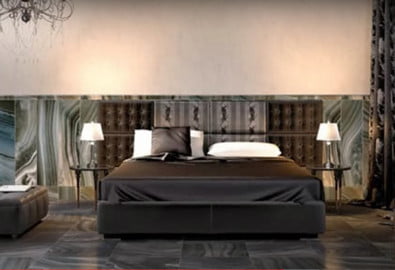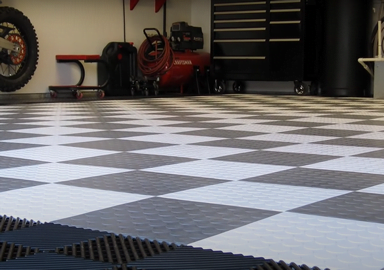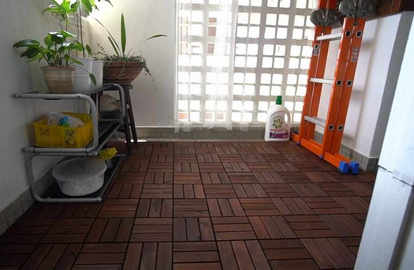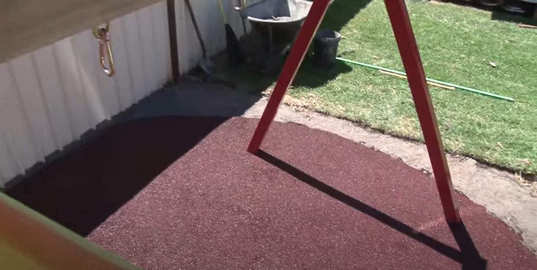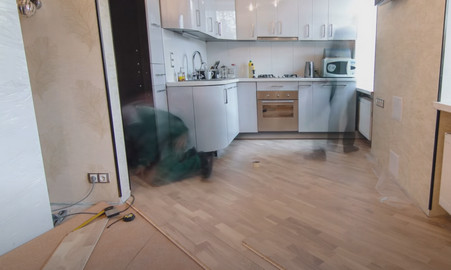The Ultimate Guide to Choosing the Perfect Flooring for Every Space
Our Ultimate Flooring Guide helps you navigate through countless options, providing expert advice on choosing the right material for every space. We cover residential, commercial, and public spaces, weighing the pros and cons of popular flooring choices.
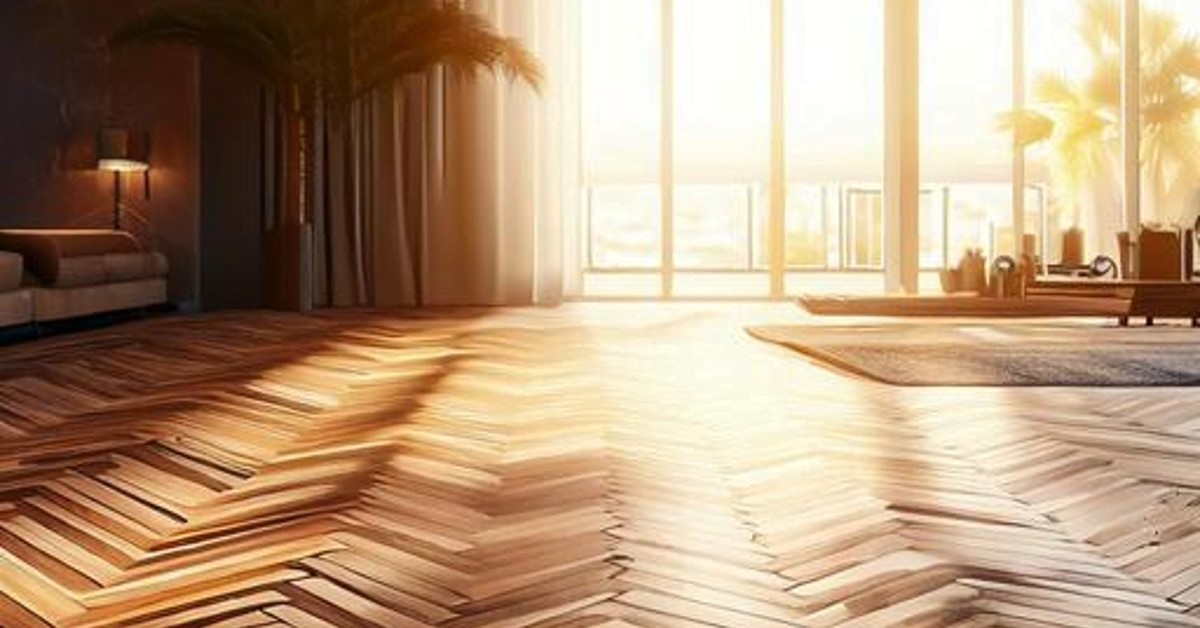
As an experienced flooring installer, I’ve spent countless hours studying, installing, and appreciating the art of flooring. Flooring is more than just a surface to walk on; it plays a pivotal role in defining the look, feel, and functionality of a space. Whether it’s the cozy carpet in a quiet bedroom or the industrial-grade concrete in a bustling factory, the right flooring can make all the difference.
Flooring for Residential Spaces
Residential flooring is a realm of boundless possibilities, with each room offering its own unique challenges and opportunities. The secret to mastering this domain lies in understanding the needs of each space and matching them with the perfect flooring option.
Living Room: Often the heart of the home, the living room sees a lot of foot traffic. A durable flooring option like hardwood can withstand this high use while adding a touch of elegance. Hardwood flooring’s natural warmth and timeless appeal make it a popular choice for living rooms.
Kitchen: Kitchens demand flooring that can handle spills, drops, and heavy appliances. Here, tile flooring shines. With its water-resistant and easy-to-clean properties, tile is a practical yet stylish choice. Porcelain and ceramic tiles offer a range of designs, allowing homeowners to create the culinary space of their dreams.
Bathroom: Bathrooms require flooring that can stand up to moisture and provide safety underfoot. Vinyl flooring offers an excellent balance of water resistance, slip resistance, and aesthetic appeal. For a more upscale look, stone tiles can be used, provided they are correctly sealed and maintained.
Bedroom: Comfort is king in the bedroom, which is why many homeowners opt for carpeting. Its softness underfoot and its insulation properties contribute to a cozy atmosphere. However, for those with allergies, hardwood or laminate flooring with large area rugs could be a better choice.
Dining Room: In a space prone to food and drink spills, easy-to-clean and durable flooring like laminate or hardwood is ideal. These options offer the added benefit of creating a formal atmosphere that enhances dining experiences.
Home Office: For a home office, think about the functionality and the type of work you’ll be doing. If it involves rolling office chairs, a hard surface like hardwood or laminate would be a good choice. For a warmer, cozier feel, consider a high-quality carpet.
Basement: Basements often face issues with moisture and require flooring that can handle potential dampness. Vinyl and tile flooring are excellent choices due to their water-resistant properties. If you’re looking to convert your basement into a comfortable living space, consider using engineered wood flooring, which can handle moisture better than solid hardwood.
Attic: The attic’s flooring depends largely on its intended use. For storage, basic plywood can suffice. However, if it’s being converted into a livable space, consider more comfortable options like carpet, laminate, or engineered wood.
Hallway/Staircase: High-traffic areas like hallways and staircases require durable, easy-to-clean flooring. Hardwood is a common choice, but laminate and vinyl also offer good durability with lower maintenance needs.
Laundry/Utility Room: These spaces need flooring that can withstand water exposure, heavy appliances, and frequent cleaning. Vinyl and tile flooring are typically the go-to options here due to their durability and water resistance.
Garage: Garages require highly durable flooring that can resist automotive fluids and heavy weight. Epoxy-coated concrete is a popular choice as it is extremely durable, easy to clean, and available in various colors to enhance the aesthetics of the space.
Outdoor Spaces (Patio, Deck, Porch): Outdoor spaces are exposed to the elements and thus need weather-resistant flooring. Stone, concrete, and specially treated wood are common choices. Consider materials that complement the exterior aesthetic of your home and the surrounding landscape.
Home Gym: Gym flooring should be able to withstand heavy equipment and provide some shock absorption. Rubber flooring is often used due to its durability, ease of maintenance, and excellent cushioning.
Children’s Playroom: Safety and durability are top considerations for a children’s playroom. Carpet tiles are a popular choice as they provide a soft surface and can be individually replaced if stained or damaged.
Home Theater: Comfort and sound absorption are key in a home theater. Carpeting is often used as it helps reduce echo and creates a cozy atmosphere for movie nights.
Conservatory/Sunroom: These sun-filled spaces require UV-resistant flooring. Options like tile, vinyl, and certain types of specially-treated wood can stand up to the bright, warm conditions while maintaining their aesthetics.
Flooring for Commercial and Public Spaces
Commercial and public spaces require careful consideration of aesthetics, durability, and maintenance when selecting flooring. Each type of space has its unique needs, and understanding these is key to making the best choice.
Office Buildings: In an office building, the flooring needs to be durable to withstand high foot traffic, particularly in areas like reception, corridors, and meeting rooms. Carpet tiles are a popular choice due to their durability and the fact that individual tiles can be replaced if necessary. For executive offices or boardrooms, hardwood or high-quality vinyl can add an upscale touch.
Retail Stores: Retail spaces need durable, attractive flooring that aligns with the store’s brand. High-end stores may opt for hardwood or tile, while a more practical choice for high-traffic stores could be laminate or vinyl.
Restaurants: Restaurant flooring needs to be easy to clean, durable, and resistant to spills. Tile, particularly ceramic or porcelain, is a common choice due to its durability and ease of maintenance.
Hotels: Hotels require a variety of flooring options, from plush carpet in guest rooms and hallways to elegant hardwood or tile in lobbies and restaurants.
Schools and Universities: Educational institutions often use a mix of flooring types, with carpeting common in libraries and offices, vinyl or linoleum in classrooms and hallways, and specialized sports flooring in gyms.
Hospitals and Clinics: In healthcare settings, hygiene takes precedence. Seamless, easy-to-clean, and durable flooring options like vinyl or rubber are ideal. In patient rooms, carpet may be used for added comfort.
Factories and Warehouses: These industrial spaces need exceptionally durable, non-slip flooring that can handle heavy machinery and equipment. High-strength concrete or epoxy flooring is often used.
Gyms and Fitness Centers: Sports flooring is designed to be impact-resistant and slip-resistant, ensuring safety during physical activities. Rubber flooring is commonly used due to its durability, shock-absorption, and ease of cleaning.
Museums: Museum flooring should be durable to handle high traffic, easy to maintain, and aesthetically pleasing. Depending on the specific area, this could range from elegant hardwood in galleries to durable, low-maintenance options like vinyl or linoleum in high-traffic areas.
Libraries: Libraries require quiet, comfortable, and durable flooring. Carpeting is a common choice due to its sound-damping properties. Hardwood or laminate might be used in areas with less foot traffic for an upscale look.
Airports: With high foot traffic and the need for durability and easy maintenance, commercial-grade terrazzo, vinyl, or polished concrete are often used in airports.
Public Transport Stations: Similar to airports, these spaces require highly durable and slip-resistant flooring. Polished concrete, terrazzo, and heavy-duty rubber are common choices.
Sports Venues: The flooring in sports venues depends on the specific sport. From hardwood in basketball courts to artificial turf in football stadiums, each sport has specific needs for safety and performance.
Theaters and Cinemas: These spaces require comfortable, sound-absorbing flooring. Carpeting is often used as it reduces echo and provides a plush walking surface.
Shopping Malls: Malls require durable, easy-to-clean flooring that can handle heavy foot traffic. Polished concrete, terrazzo, and high-quality vinyl are popular choices.
Churches and Places of Worship: These spaces often have traditional or specific aesthetic requirements. Depending on the tradition, this could range from stone and marble to hardwood.
Community Centers: Community centers need durable, easy-to-clean flooring that can accommodate a variety of activities. Vinyl, linoleum, and hardwood are often used in these multifunctional spaces.
Factors to Consider When Choosing Flooring
Selecting the right flooring for your space involves more than just aesthetic considerations. Here are some key factors that should guide your decision-making process:
Traffic and Use: High-traffic areas require durable flooring that can withstand wear and tear. Consider the intended use of the space and how much foot traffic it will receive when choosing your flooring.
Moisture Exposure: Some spaces, such as bathrooms, kitchens, and basements, are prone to moisture and require water-resistant flooring. Materials like vinyl, tile, and specially treated wood are designed to withstand moisture.
Maintenance and Cleaning: Some flooring types require more upkeep than others. For example, hardwood floors may need to be refinished over time, while vinyl or laminate flooring is relatively low maintenance.
Aesthetics and Comfort: The look and feel of your flooring can significantly impact the aesthetics and comfort of a space. Consider the style you want to achieve and how the flooring can contribute to that look.
Safety Considerations: Certain spaces, such as kitchens and bathrooms, require slip-resistant flooring to prevent accidents. In spaces like gyms or children’s playrooms, consider flooring with good shock absorption to minimize injury risk.
Cost and Installation: Budget is a crucial factor in any renovation project. Ensure you consider not only the initial cost of the flooring material but also the cost of installation and long-term maintenance.
Popular Flooring Options and Their Pros and Cons
Let’s delve deeper into some popular flooring options and weigh their strengths and weaknesses:
Hardwood: Hardwood is a classic choice that adds significant value and beauty to a space. It is durable and can be refinished several times to remove signs of wear. However, it requires regular maintenance and is not suitable for areas prone to moisture.
Laminate: Laminate flooring is a cost-effective alternative that can mimic the look of hardwood, tile, or stone. It is easy to install and maintain but can be damaged by moisture and may not be as long-lasting as other options.
Vinyl: Vinyl is a versatile option that comes in a range of styles and designs. It is water-resistant and easy to clean, making it suitable for kitchens and bathrooms. However, it may not add as much value to your home as other types of flooring.
Ceramic Tile: Ceramic tile is durable, water-resistant, and available in a variety of styles and colors. It is an excellent choice for bathrooms and kitchens but can be cold and hard underfoot.
Carpet: Carpet provides a soft, warm surface that’s comfortable underfoot. It also offers excellent sound absorption. However, it can be prone to stains and requires more maintenance than hard surfaces.
Concrete: Concrete is extremely durable and easy to maintain, making it suitable for industrial spaces. With modern techniques, it can be polished or stained for a more aesthetically pleasing look.
Natural Stone: Natural stone, such as marble or granite, offers a high-end, timeless look. It is durable but requires sealing to prevent stains and damage.
Bamboo: Bamboo flooring is an eco-friendly option that’s durable and similar in appearance to hardwood. It is relatively easy to maintain but can be susceptible to scratches and moisture damage.
Cork: Cork is a soft, eco-friendly material that’s resistant to mold, mildew, and pests. It provides excellent insulation but can be damaged by sharp objects and may fade in direct sunlight.
Flooring Installation Tips and Tricks
As an expert flooring installer, I can’t stress enough the importance of proper installation. No matter how high-quality your flooring material is, improper installation can lead to numerous problems down the line. Here are some tips to ensure a successful flooring installation:
1. Preparing the Subfloor: Before installing any flooring, it’s crucial to prepare the subfloor. It should be level, clean, and dry to provide a solid base for your new flooring.
2. Acclimating the Flooring: Some types of flooring, like hardwood and laminate, need to acclimate to the room’s temperature and humidity before installation. This step can prevent future warping or shrinking.
3. Using the Right Tools: Different types of flooring require different installation tools. Be sure you have the right tools for the job, whether that’s a particular adhesive for vinyl flooring or a special underlayment for laminate.
4. Following Manufacturer’s Instructions: Always follow the manufacturer’s instructions for installation. This advice will help you avoid common pitfalls and ensure that your warranty remains valid.
5. Hiring Professionals for Complex Jobs: While some flooring can be a DIY project, other types, like hardwood and tile, often require a professional touch. Don’t hesitate to hire professionals for complex installations.
In Summary,
Flooring is more than just a functional aspect of a space; it’s a crucial element that contributes to the aesthetics, comfort, and overall experience of a space. Whether you’re choosing flooring for a cozy bedroom, a bustling restaurant, or a high-traffic airport, understanding the unique needs of the space and the pros and cons of different flooring options will guide you to the perfect choice. Remember that proper installation is key to ensuring your new flooring looks great and lasts for years to come.
With this, we conclude our comprehensive guide to selecting the perfect flooring option for every space. From residential to commercial and public spaces, we’ve covered the broad spectrum of flooring considerations. Remember, the right flooring can make all the difference. Choose wisely, and your space will thank you.
